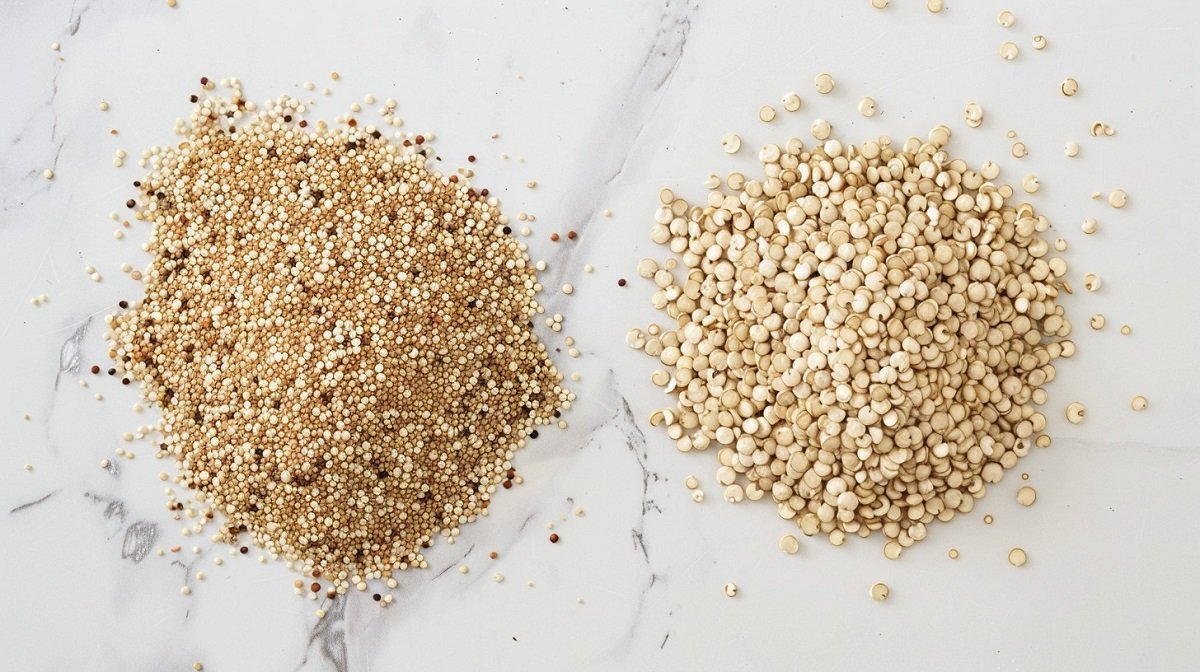The age-old argument between rice and quinoa in the category of staple foods has gained a lot of traction, especially in health-conscious circles. Although both grains have been important parts of diets around the world, quinoa and rice are increasingly compared as people look for more nutrient-dense, flexible options. In order to help readers make knowledgeable decisions about these dietary staples, this article will examine the health benefits of both quinoa and rice in their nutritional showdown.
Quinoa Health Benefits Vs Rice
1. Quinoa: The Nutrient Powerhouse
Quinoa is frequently heralded as a superfood because of its remarkable nutritional makeup. Quinoa is a complete protein source that includes all nine essential amino acids required for human health, unlike rice. Because of this, it’s a great option for vegans and vegetarians trying to get enough protein.
Additionally, quinoa has a high fiber content, which improves digestive health and helps with weight management. In addition, the grain contains a wealth of vital minerals like phosphorus, potassium, and magnesium that support healthy bones, strong muscles, and general wellbeing.
2. Rice: A Dietary Staple
Rice is a staple food for billions of people worldwide and comes in a variety of forms, each with a distinct nutritional makeup. Though white rice is more widely consumed, because of its higher fiber content and added nutrients, brown rice is a healthier option.
Because rice contains a lot of carbohydrates, it is a good source of energy. On the other hand, quinoa has more protein than it does. The nutritional value of rice is greatly influenced by the type selected; whole grain varieties offer higher levels of vitamins and minerals.
3. Comparing Macronutrients
The comparison of rice and quinoa’s macronutrient makeup is one important factor in the argument. Quinoa is a more filling and nutrient-dense option because of its higher protein and fiber content. Conversely, rice primarily consists of carbohydrates, providing a burst of energy but not as much protein as quinoa.
4. Micronutrient Showdown
A closer look at the micronutrient profile reveals the unique benefits that each grain offers. Quinoa excels in providing an impressive range of minerals and vitamins, including iron, zinc, and B vitamins. These nutrients are essential for energy metabolism, immunological response, and general health.
Although rice is not as high in micronutrients, it does contain significant amounts of some minerals, such as selenium and manganese. Depending on dietary preferences and individual nutritional needs, rice or quinoa may be the better option.
5. Culinary Versatility and Cultural Significance
Apart from their nutritional characteristics, the culinary adaptability and cultural importance of rice and quinoa are crucial aspects to take into account. In many Asian nations, rice is a staple food and is essential to many different types of cuisine. Due to its distinct texture and nutty flavor, quinoa is becoming more and more popular as a stylish and adaptable ingredient in Western cuisine.
QUINOA Now Greenfit | Royal Organic White Quinoa (25 Lb)
Conclusion
Both grains have unique benefits to offer in the quinoa health benefits vs. rice debate. Quinoa is a great option for individuals looking for a healthier substitute because of its unique protein- and nutrient-rich profile. Even though rice is a dependable energy source, choosing it carefully can optimize its nutritional value.
The decision between rice and quinoa ultimately comes down to personal dietary preferences, goals, and cultural factors. Integrating these grains into a well-rounded diet should be done in a wholesome way by striking a balance between culinary enjoyment and nutritional requirements. As we honor the diversity of these world cuisine mainstays, we must also appreciate the distinct advantages that each one offers.



